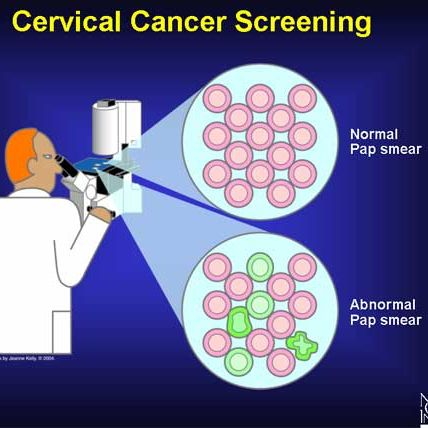
- BY Admin |
- September 19, 2017 |
- 0 COMMENTS |
- 1138 VIEWS
- 0
- 0
Why is Cancer cervix important?
Cervix is the mouth of the uterus.
One out of every five women in the world suffering from this disease belongs to India. More than three-fourths of these patients are diagnosed at advanced stages leading to poor prospects of long-term survival and cure.
What, if any, is the silver lining in the matters of Cancer of cervix?
Cervix is an organ which is easily visible and also accessible during routine gynaecologic examination. Hence any abnormality of cervix holds the promise of easy detection and therefore early, appropriate intervention. This means that with regular screening, it is possible to keep a track of any undesirable change that a cervix might undergo.
What is screening for cervical cancer?
Screening is a method by which all the population- including the healthy ones are subjected to some test or examination so that it is possible to pick up the ones which are abnormal. Screening must not be confused with a diagnostic test. A screen merely detects a possible high risk case while a diagnostic test is used to confirm the presence or absence of the disease.Screening for cervical cancer aims at recognizing women who are at high risk of and likely to develop cancer of the cervix.
Who can get cancer of the cervix?
Any sexually active woman can get cancer of the cervix. However there are a few women.who are at a higher risk (probability) than others in getting cancer cervix.
Who are the high risk women for Cancer cervix?
The following factors are well recognized risk factors for cancer cervix:a) Early age of marriage and/or early age at first intercourse.b) Early age at first child birth. Multiple pregnancies.c) Sexual promiscuity: Multiple sexual partners or sexual partner with multiple partners.d) Persistent HPV (Human Papilloma Virus) Infectione) Co-exists with other sexually transmitted diseases like HIV, syphilis and gonorrhea.
Women receiving immune-suppressant drugsAre any women at lower risk?
Monogamous women whose sexual partners have had circumscision or have used condoms. (The male smegma has been implicated in the causation of cancer Cervix.) may be at a lower risk.Long term efficacy of vaccination against HPV for Cervical cancer prevention is being studied.Virgins, women who have not borne children may also be at lower risk.
What is the natural history and evolution of Cancer of the Cervix?
As we are aware, the cells in our body are in a state of constant flux. New cells keep replacing the old ones as a part of this remodeling mechanism. Due to certain reasons, the cells of the cervix gradually transform from being normal to cancerous. This transformation does not occur overnight or over a period of days. It takes several YEARS for a normal cervix to become cancerous.Before becoming obviously cancerous, the cervix therefore has a long pre-cancerous period. Sometimes, it may take well over 15-20 years for a pre-cancerous cervix to become overtly cancerous.Hence it is possible to detect an abnormal cervix during the course of its evolution from normal to abnormal. And therefore halt the process by appropriate interventions.
What does the screening for cervical cancer do?
Cervical cancer screening aims to pick up abnormal cells that are developing in the cervix. As mentioned earlier, cervix is one of the organs that is easily visible to the naked eye. Hence it is possible not only to visualize the cervix but also do certain simple tests on it in order to confirm or rule out the presence of an abnormality.
Who must undergo screening for Cancer of the cervix?
All women who are sexually active currently or have ever been, merit screening for cancer of the cervix.A concrete screening program and follow up to identify pre-cancerous cervices has not yet been strategized in India, unlike in the UK where the organized and well documented cancer screening program has seen a dramatic reduction in cases of cervical cancer.
What are the tests done for cervical cancer screening?
Inspection of the cervix: Visualizing the cervix under good light and after the application of acetic acid aids in identifying suspicious areas. Pap’s Smear: This is a simple test done quite extensively all over the world for early detection of cervical cancer.Colposcopic examination: Often undertaken after an abnormal Pap’s test. A colposcope is a specialized equipment which helps to examine the cervical cancer.
